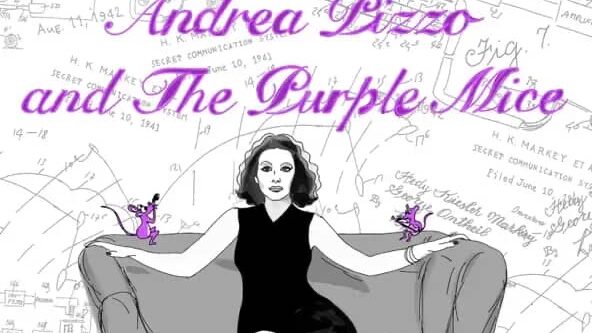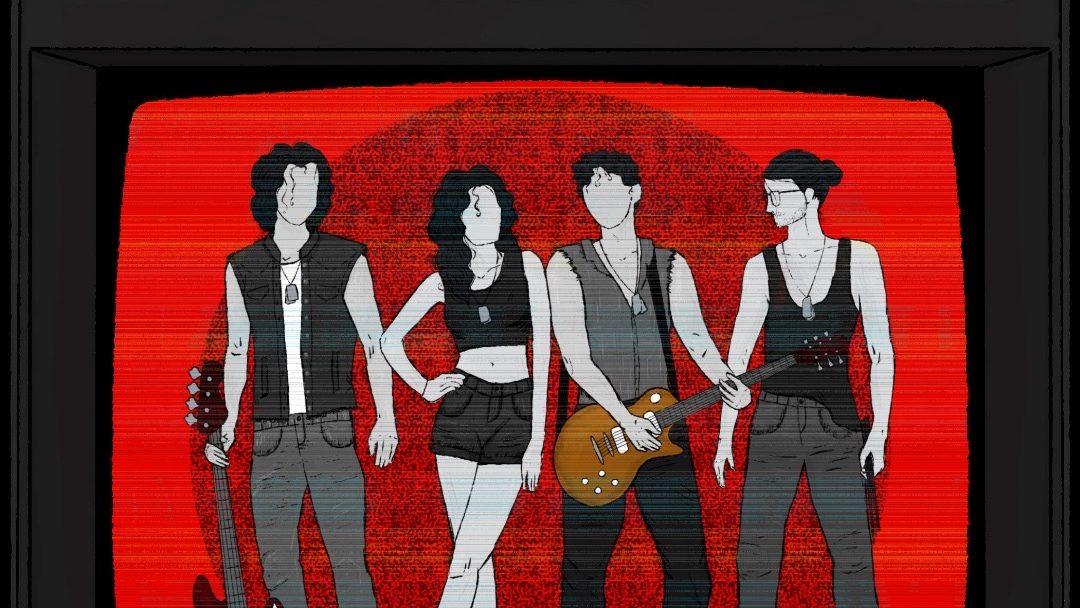From the opening bars of “Bombshell” by Andrea Pizzo and The Purple Mice, the track immediately establishes itself as more than just another blend of synth rock or dance pop. It is muscular, textured, and steeped in narrative ambition. The introduction, driven by a pulsing bass kick, creates an undercurrent of tension where retro influences meet modern electronic polish. This duality continues as the vocals enter, shifting the mood from an energetic groove to a reflective atmosphere that draws the listener into a story. The voices themselves carries both celebratory and contemplative qualities, echoing the contrast between glamour and erasure. Instrumentally, Andrea Pizzo and The Purple Mice layer synthesizers, guitars, and electronic percussion in a way that feels both cinematic and raw, ensuring the song maintains emotional depth without losing its ability to move a dance floor.
The thematic core of “Bombshell” lies in its dedication to Hedy Lamarr, the actress and inventor whose life embodies the tension between external recognition and internal brilliance. Andrea Pizzo and The Purple Mice go beyond a simple tribute, instead weaving Lamarr’s narrative of flight from an oppressive Europe, rise to Hollywood stardom, and struggle for acknowledgment of her intellectual contributions. The lyrics highlight the dissonance between beauty and substance, placing emphasis on how society remembers certain traits while burying others. The recurring line “Now they call me bombshell” becomes both ironic and haunting, as it reflects not only admiration but also a form of erasure. The band captures this irony with a sharpness that resonates, encouraging listeners to consider the cost of a legacy shaped by perception rather than truth.
Musically, “Bombshell” succeeds in balancing retro and contemporary elements without tipping into nostalgia. The vintage pop and synth textures echo the glamour of Lamarr’s Hollywood era, while the crisp electronica and rock undertones ground the piece in a modern framework. The arrangements, credited to Roberto Tiranti, showcase careful attention to detail, allowing each element to shine without overcrowding the mix. Andrea Pizzo’s vocal delivery matches the theatricality of the subject matter, shifting between moments of vulnerability that feel almost spoken and passages of bold, full-bodied singing that command attention. The chorus is striking in its memorability, striking the delicate balance between catchy immediacy and lyrical weight.
The structure of the song rewards repeated listening. On the surface, the melody and narrative are compelling enough to hold attention, but deeper listens reveal the intricacy of the production. There are subtle synth counter melodies, background vocal harmonies that add depth, and carefully chosen instrumental shifts that mirror the emotional turns of Lamarr’s story. These details allow the track to move beyond being a simple homage, turning it into a layered soundscape where every element contributes to the storytelling. The transition between verses, choruses, and instrumental passages is fluid yet deliberate, creating a sense of journey that mirrors the narrative arc of the lyrics.
What sets “Bombshell” apart is its willingness to confront uncomfortable truths about recognition, gender, and legacy. By focusing on Lamarr’s experience of being celebrated for her beauty while her intellect went largely ignored, Andrea Pizzo and The Purple Mice use music to interrogate how cultural memory is shaped. The sonic contrasts in the song mirror these tensions, shifting between brightness and shadow, theatrical shine and quiet introspection. This dynamic makes the song feel not only like a piece of entertainment but also like a critical reflection on how women in history have been defined and confined by public perception. It is art with a purpose, executed without sacrificing accessibility.
Within the broader context of the band’s project Transhumanity, “Bombshell” emerges as a pivotal track. It signals that Andrea Pizzo and The Purple Mice are not content with surface level musicality but are committed to creating work that blends history, philosophy, and science with sound. By honoring Hedy Lamarr’s legacy in a way that is both celebratory and critical, the band achieves a delicate balance of intellect and emotion. “Bombshell” is a track that resonates deeply because it entertains while it provokes thought, inviting listeners to dance while reflecting on the complexities of memory, fame, and human identity. It is this dual function that makes the song not just powerful in the moment, but lasting in its impact.
For more information about Andrea Pizzo and The Purple Mice, click on the icons below.



